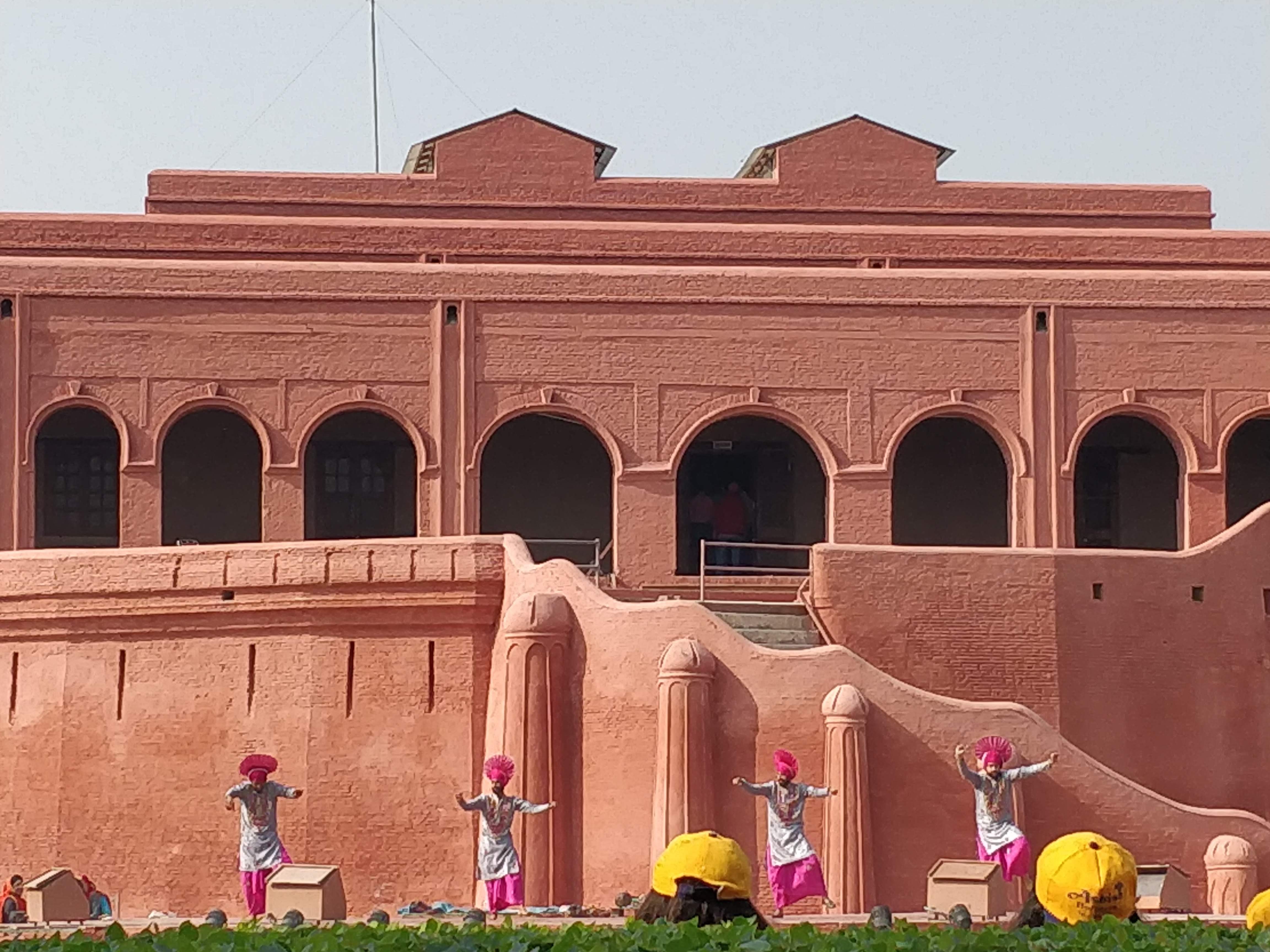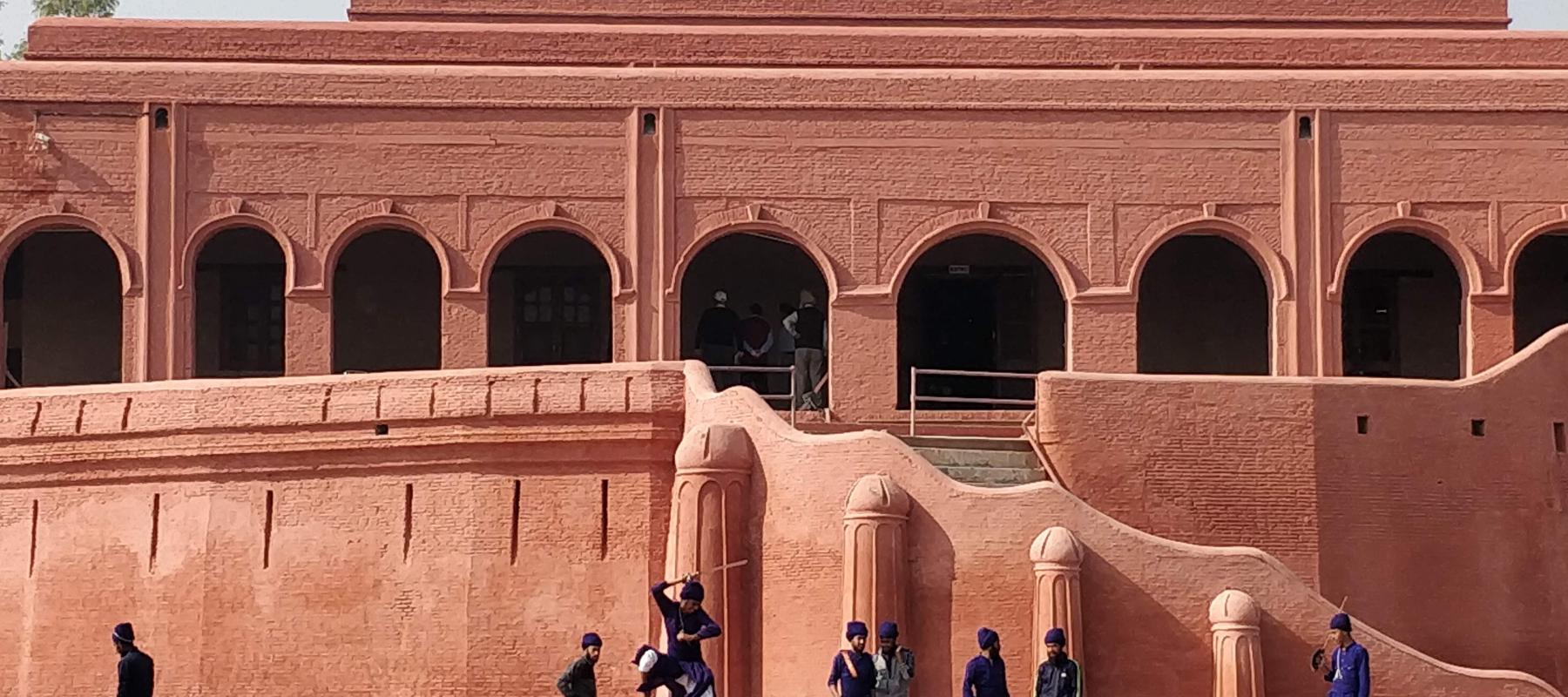The year is 1807. A war has been declared. The enemy is approaching. So many soldiers from both sides have already lost their lives. But there’s no backing out now. We need to claim the kingdom of Afghan. We must defeat the Afghani chief, Qutub-ud-Din. It's been a month of fierce fighting, but we are so close to winning. Galloping towards the enemy on the warrior horse, swinging the sword, sparing no one on the way and there... the win is ours. We declare him Sher-e-Punjab.
And that is the name of the 7D film that takes you into the battlefield with the erstwhile ruler of Punjab, Maharaja Ranjit Singh. With shows running inside the magnificent Gobindgarh Fort in Amritsar, it gives an insight into the interesting and gritty history of the kingdom and takes one on a wonderful virtual journey through the Punjab of the yesteryears.
But that is not the only journey one can take at this venue. Sahapedia organised a unique heritage walk on February 16, 2019, through its outreach programme, India Heritage Walks, to experience all that Punjab has to offer at the Gobindgarh Fort. With a colourful history, this architectural marvel is not just a treasure trove of stories but also of Punjabi culture -- that is experienced in totality at the mighty fort.
Through this initiative, visitors immersed themselves in interesting tales of the kingdom and stories of its courageous rulers, observed several exhibits of objects and memoirs from the bygone era, relished lip-smacking Punjabi delicacies, and experienced its enthralling folk performances, all in the historic space of the Gobindgarh Fort.

Originally built in brick and lime in the 18th century by a local chieftain, Gujjar Singh Bedi, the fort was conquered in the early 19th century by Maharaja Ranjit Singh, who renamed it after the 10th Sikh guru, Guru Gobind Singh. With 25 mounted cannons and four bastions, the fort, modelled after a French military fortress, was built to protect the holy Harmandir Sahib from invaders. With an enclosed Toshakhana (treasure house) and an underground tunnel that ran towards Lahore, the fort produced its own artillery and had its own coin minting room.
Most of these are now exhibited in various museums housed in the fort campus. The Toshakhana, that once housed the Kohinoor diamond, now displays the various coins minted in the fort along with a replica of the much-coveted diamond. One can also walk through the Ancient Warfare Museum that has several replicas of artillery and weapons and life-like figurines of warriors in traditional war attire. The detailed fineness in the figurines is enough to instill passion and patriotism in any visitor. Perhaps the most exciting part of the walk involved experiencing the whispering walls, i.e., the Kandhan Boldiyan Ne. The live showcase of galloping horses and dancing swords, using projection mapping technologies and laser lights to tell tales of bravery and wisdom, gives one goosebumps.

The walk also included a visit to the Ambarsari Zaika at the fort, an eat street of sorts full of Amritsari delicacies that leave your mouth watering. Participants chose from a big glass of thick lassi to stuffed parathas dripping with oodles of butter and sumptuous aloo tikkis, among other delicacies. They also visited the Haat Bazaar to pick up souvenirs, choose between colourful phulkaris and the choicest of juttis. The enthralling folk dance performances of Bhangra and Gidda on the divine tunes of algoza, rubab and duff in the garden, were also quite an experience.
Participants were also introduced to Gatka, a traditional Punjabi martial art form that employs wooden sticks as swords and can either be played as a sport or performed as a ritual. They learnt about the interesting history and purpose of the martial art form from trained Gatka players after their performance. Finally, they embarked upon the 7D adventure of Maharaja Ranjit Singh’s life to relive the experience of the ruler.
The walk was led by Amita Sharma, a resident of Amritsar. An alumnus of NSD with a rich background in conducting theatre workshops, she is well versed with the history and cultural legacy of Amritsar and is a compelling storyteller.
To learn more about the rich heritage of Amritsar on Sahapedia, click here.
Feature Image Courtesy: Devyani Nighoskar
References
https://www.hindustantimes.com/punjab/history-will-pour-out-of-every-brick-of-gobindgarh-fort-says-deepa-sahi/story-TTW0vORagnwy6JreGa0VBM.html
Kushwant Singh. "RANJIT SINGH (1780–1839)". Encyclopaedia of Sikhism. Punjabi University Patiala. Retrieved 18 August 2015./http://www.learnpunjabi.org/eos/index.aspx
https://www.sahapedia.org/search/node/amritsar

